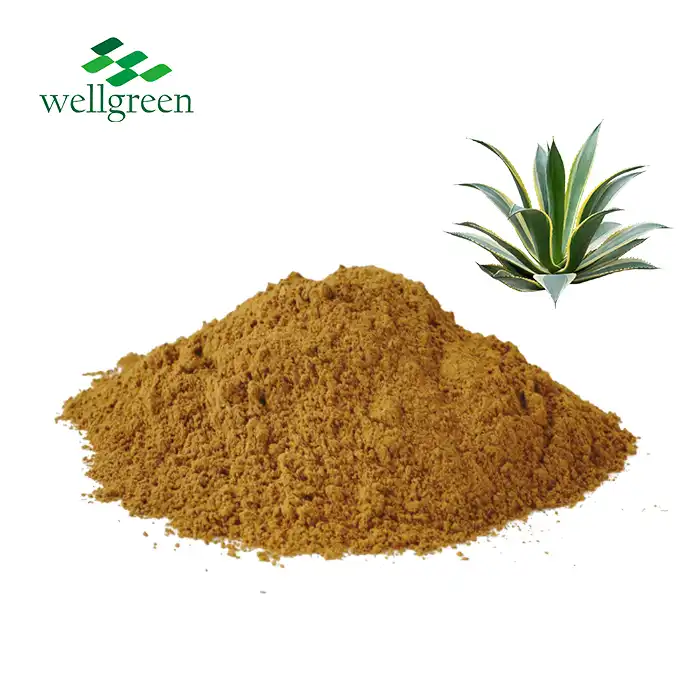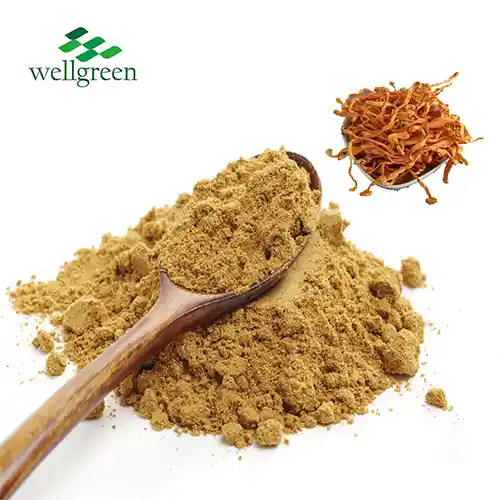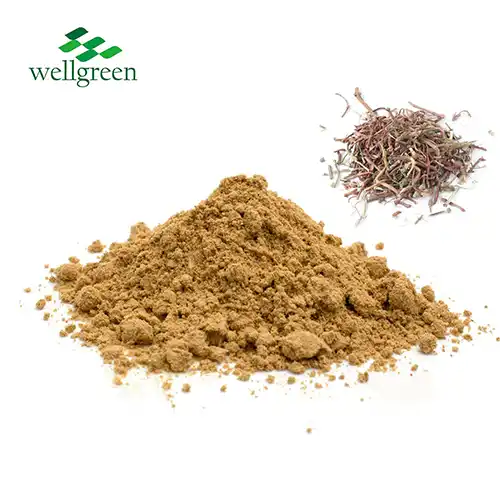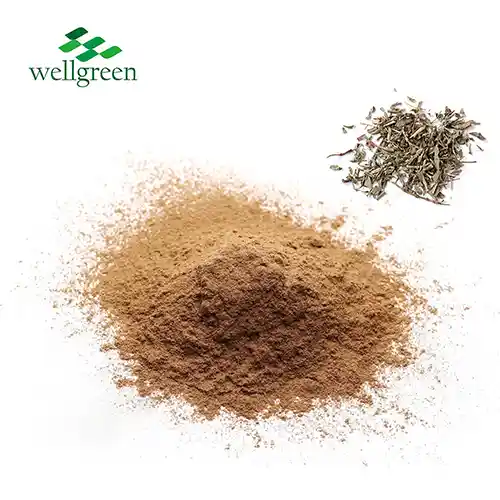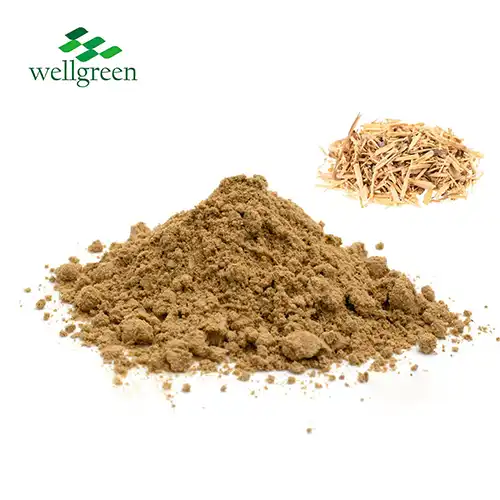Can Kava Extract Powder Really Help Reduce Anxiety Naturally?
2025-10-13 13:36:44
Kava extract powder, derived from the roots of the Piper methysticum plant, has garnered significant attention for its potential to alleviate anxiety naturally. Research suggests that this traditional Pacific Island remedy may indeed offer anxiolytic effects without the severe side effects associated with many pharmaceutical interventions. The active compounds in kava, known as kavalactones, interact with neurotransmitter systems in ways that promote relaxation and reduce stress. While clinical studies have shown promising results in treating generalized anxiety disorder, it's important to note that kava's use should be approached with caution due to potential liver concerns. When sourced from reputable suppliers and used responsibly under professional guidance, standardized kava extract powder may provide a viable natural option for those seeking relief from anxiety symptoms.

Active Compounds: Kavalactones and Their Mechanisms
Chemical Structure and Varieties of Kavalactones
Kavalactones, the primary bioactive constituents in kava extract powder, are a group of structurally related lactones. These compounds are responsible for kava's psychoactive and anxiolytic properties. The six major kavalactones identified in kava include kavain, dihydrokavain, methysticin, dihydromethysticin, yangonin, and desmethoxyyangonin. Each kavalactone contributes uniquely to kava's overall effects, with their relative concentrations determining the specific "chemotype" of a kava variety.
Neurological Interactions of Kavalactones
The anxiolytic effects of kavalactones stem from their interactions with various neurotransmitter systems in the brain. Research has shown that these compounds modulate GABA receptors, enhancing the binding of GABA and promoting a calming effect. Additionally, kavalactones influence dopamine and serotonin pathways, potentially contributing to mood elevation and stress reduction. Some kavalactones also exhibit properties that inhibit norepinephrine reuptake, which may help in managing anxiety symptoms.
Pharmacokinetics of Kava Extract Powder
When consumed, kavalactones in kava extract powder are rapidly absorbed in the gastrointestinal tract. These lipophilic compounds can cross the blood-brain barrier, allowing them to exert their effects on the central nervous system. The metabolism of kavalactones primarily occurs in the liver, which has raised some concerns about potential hepatotoxicity. However, the exact mechanisms of kava metabolism and its impact on liver function are still subjects of ongoing research.
Clinical Evidence: Studies on Anxiety Reduction
Randomized Controlled Trials
Several randomized controlled trials have investigated the efficacy of kava extract powder in reducing anxiety symptoms. A meta-analysis of these studies published in the Journal of Clinical Psychopharmacology found that standardized kava extracts were significantly more effective than placebo in treating anxiety disorders. One notable study involving 75 participants with generalized anxiety disorder reported a significant reduction in anxiety scores after 6 weeks of kava supplementation compared to the placebo group.
Comparative Studies with Conventional Anxiolytics
Researchers have also conducted comparative studies between kava extract and conventional anxiolytic medications. A double-blind, randomized controlled trial comparing kava to the benzodiazepine oxazepam found comparable efficacy in treating non-psychotic anxiety. Importantly, the kava group reported fewer side effects and no evidence of dependency, which are common concerns with benzodiazepine use. These findings suggest that kavalactone powder may offer a natural alternative with a potentially more favorable side effect profile.
Long-term Safety and Efficacy Assessments
Long-term studies on the safety and efficacy of kava extract powder have yielded mixed results. While many studies support its anxiolytic effects, concerns about potential liver toxicity have prompted further investigation. A comprehensive review published in the journal Phytomedicine examined the long-term use of kava and concluded that when used as directed and sourced from reputable suppliers, the risk of liver toxicity is low. However, the review emphasized the need for ongoing monitoring and adherence to quality standards in kava production and usage.
Product Applications: Standardized Kava Extract in Functional Formulations
Standardization Processes for Bulk Kava Extract Powder
The production of high-quality bulk kava extract powder involves rigorous standardization processes to ensure consistency in kavalactone content. Manufacturers employ advanced extraction techniques, such as supercritical CO2 extraction, to isolate and concentrate kavalactones from raw kava root. The resulting extract is then standardized to a specific kavalactone percentage, typically ranging from 30% to 70%. This standardization is crucial for maintaining batch-to-batch consistency and enabling precise dosing in functional formulations.

Integration into Dietary Supplements and Functional Foods
Standardized kava extract powder has found applications in various dietary supplements and functional food products. Capsules and tablets containing precise doses of kavalactone powder are popular among consumers seeking natural anxiety relief. Some manufacturers have also incorporated kava extract into functional beverages, such as relaxation drinks or stress-relief teas. The versatility of kava extract powder allows for its integration into a wide range of product formats, catering to different consumer preferences and lifestyles.
Quality Control and Safety Considerations
Ensuring the safety and efficacy of kava-based products requires stringent quality control measures. Reputable manufacturers implement comprehensive testing protocols to verify the kavalactone content and screen for potential contaminants. This includes testing for heavy metals, microbial contamination, and the presence of potentially harmful alkaloids. Additionally, responsible producers adhere to Good Manufacturing Practices (GMP) and obtain third-party certifications to validate their quality control processes. These measures are essential for maintaining consumer trust and ensuring the safe use of kava extract powder in functional formulations.
Conclusion
The evidence suggests that kava extract powder, when used responsibly and sourced from reputable suppliers, may indeed offer a natural approach to reducing anxiety. The active kavalactones in standardized kava extracts have demonstrated anxiolytic effects in clinical studies, with a potentially favorable side effect profile compared to some conventional medications. However, it's crucial to approach kava use with caution, considering the potential for liver interactions. As research continues to evolve, kava extract powder remains a promising natural option for those seeking alternatives in anxiety management, but it should be used under professional guidance.
Contact Us
If you're interested in high-quality kava extract powder for your functional formulations, contact Xi'an Wellgreen, a leading manufacturer and supplier of plant extracts. For inquiries about bulk kava extract powder or kavalactone powder, email us at wgt@allwellcn.com. Our GMP-certified facility ensures premium quality and consistent potency in every batch.
References
1. Sarris, J., et al. (2013). Kava in the treatment of generalized anxiety disorder: A double-blind, randomized, placebo-controlled study. Journal of Clinical Psychopharmacology, 33(5), 643-648.
2. Smith, K., & Leiras, C. (2018). Kava, the anxiolytic herb: A review of its pharmacology, efficacy and safety. Journal of Ethnopharmacology, 220, 153-162.
3. Teschke, R., & Lebot, V. (2011). Proposal for a kava quality standardization code. Food and Chemical Toxicology, 49(10), 2503-2516.
4. Savage, K. M., et al. (2015). Kava for the treatment of generalized anxiety disorder RCT: Analysis of adverse reactions, liver function, addiction, and sexual effects. Phytotherapy Research, 29(1), 54-62.
5. Cairney, S., et al. (2003). Saccade and cognitive function in chronic kava users. Neuropsychopharmacology, 28(2), 389-396.
6. Showman, A. F., et al. (2015). Contemporary Pacific and Western perspectives on `awa (Piper methysticum) toxicology. Fitoterapia, 100, 56-67.

